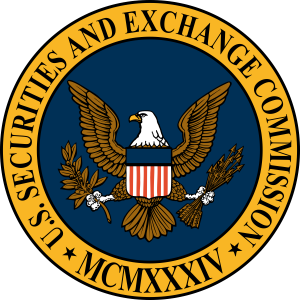 As the COVID-19 pandemic continues to affect industries worldwide, companies are working to stay abreast of—and to proactively react to—the effects and the unique risks of this pandemic. The inherent uncertainty concerning timeframe and magnitude of market disruptions has caused many companies, and even industries, to reevaluate status quo operations and adjust both short-term plans and long-term risk assessments. In light of this, the Division of Corporation Finance of the Securities and Exchange Commission (SEC) has recently released guidance for public companies regarding its current views on such companies’ risk factor disclosures in light of COVID-19’s distinctive disruptions.
As the COVID-19 pandemic continues to affect industries worldwide, companies are working to stay abreast of—and to proactively react to—the effects and the unique risks of this pandemic. The inherent uncertainty concerning timeframe and magnitude of market disruptions has caused many companies, and even industries, to reevaluate status quo operations and adjust both short-term plans and long-term risk assessments. In light of this, the Division of Corporation Finance of the Securities and Exchange Commission (SEC) has recently released guidance for public companies regarding its current views on such companies’ risk factor disclosures in light of COVID-19’s distinctive disruptions.
While acknowledging market forces outside a company’s control, the Division affirms in its guidance that the “cornerstone of this system is disclosure of material information that is widely disseminated” so that “all investors can make informed decisions.” It adds that the “Commission has made clear that its disclosure requirements can apply to a broad range of evolving business risks even in the absence of a specific line item requirement that names the particular risk presented.”
The following describe three practical takeaways that public companies should consider in light of the Division’s guidance:
- Update risk factor disclosures to document actual impacts.
The pandemic has transformed hypothetical risks into urgent crises that companies worldwide are being forced to navigate. Public companies should update their disclosures to document any actual impacts faced by the company.
For example, if a previous risk disclosure stated, “if we become unable to meet our stated service level commitments or if we suffer extended periods of unavailability, we may be contractually obligated to provide such affected customers with service credits for future subscriptions,” then an updated disclosure should likely state, “we have become unable to meet our stated service level commitments and we continue to suffer extended periods of unavailability. For this reason, and in light of our contractual obligations, we have and will continue to provide affected customers with service credits for future subscriptions.”
- Update risk factor disclosures to include both COVID-19-specific risks and expectations regarding the effects of such risks.
Many companies have transformed their service delivery model in light of COVID-19, including implementing various remote-work arrangements. The Division has asked companies to consider whether such arrangements have or are reasonably likely to materially “affect [company’s] ability to maintain operations, including financial reporting systems, internal control over financial reporting and disclosure controls and procedures.”
Often, in addition to remote work arrangements, companies have either considered or actually implemented business continuity plans. The Division asks such companies to contemplate disclosing any challenges or material resource constraints companies have or might face in implementing these plans.
- Update general risks that might be amplified by the uncertainty of COVID-19.
In light of COVID-19, previously disclosed risks might now have consequences beyond those previously documented. For example, weak termination rights and protections might exacerbate risks related to a compromised service delivery model and/or business continuity plan. These additional risks, both short-term and long-term, should be updated in a company’s risk factor disclosures.
The above takeaways are meant to provide a general checklist for public companies to consider when updating their risk factor disclosures during these uncertain times. While the noted recommendations are consistent with the general disclosure principles, public companies should tailor their risk factor disclosures to the particular conditions they face, and accurately capture anticipated effects of the evolving pandemic on their business.
RELATED ARTICLES
The FTC, Kidfluencers and the Looming Challenge of Child-Proof Disclosures
Disclose or Else: FTC Steps Up Prosecution of Social Media Influencers
 Internet & Social Media Law Blog
Internet & Social Media Law Blog


